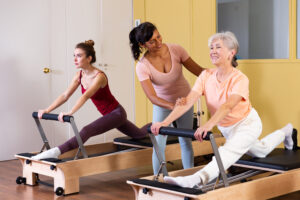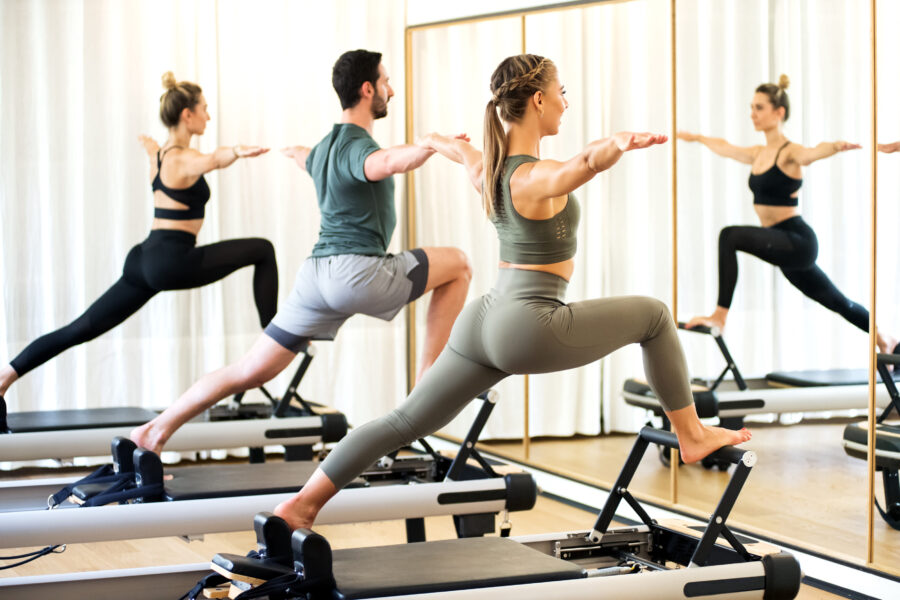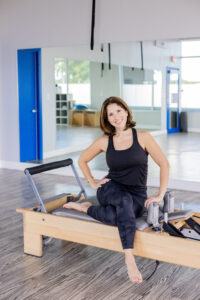Pilates is having a moment. Every other Instagram reel is a waist-snatching pilates workout, and reformer-friendly matching workout sets stock the shelves at Lululemon and Athleta. But the appeal of pilates isn’t the picture-perfect body or the $100 sports bra; it’s the adaptability and accessibility of the workout. It’s a workout for all ages and body types.
First and foremost, Pilates offers a comprehensive workout that targets the entire body. Unlike many other forms of exercise that may focus on specific muscle groups or aspects of fitness, Pilates helps improve core strength, flexibility, posture, and muscle tone all in one session. This full-body approach appeals to individuals looking for a balanced and effective workout that addresses multiple aspects of physical fitness.
Boston-based pilates master instructor and physical therapist Andreina Capriles was drawn to the workout after noticing similarities between pilates moves and physical therapy practices. “All the resistance work that you do in pilates, all the spring loads and the concentric and eccentric muscle contractions that you do in a muscle, the way that the muscle works one the reformer with that resistance is something you would use in a rehabilitation setting,” says Capriles.
The low-impact workout can significantly increase strength, energy, balance, and flexibility. Capriles has used it for everyone, from Parkinson’s patients to Olympic swimmers. Another perk of pilates is that it can be tailored to anyone’s workout needs and preferences.
“It’s a workout for everybody, any age, gender, or lifestyle,” says Capriles. “I might have this runner who loves a big cardio workout and I can give that person, in pilates, a big cardio workout. But I might also have my client who is used to yoga and likes a more easygoing workout…you can make pilates work for that client as well.”
For the uninitiated: pilates is a mind-body exercise system developed by German physical trainer Joseph Pilates in the early 1900s. The system uses repetitive movements, resistance, and breathwork to build strength and balance.

Adobe Stock Image
Today, pilates has evolved to be performed either on a mat or with more rigorous equipment, such as a spring-based resistance machine called a reformer.
Capriles says there are two schools of thought in the practice, classical pilates which aligns with Joseph Pilates’s early theories and exercises, and contemporary pilates which puts a fun spin on those exercises with more weights and props to keep easily-bored exercisers engaged.
Though pilates is an accessible and low impact workout, Capriles warns eager exercisers and instructors not to believe everything they see on social media. False claims boasting certain exercises can give you ripped abs or a curvy butt instantaneously can lead to disappointment. And worse, attempting difficult moves like handstands without proper conditioning can lead to injury.
“Trying to copy a little bit everything you see in social media is a big mistake for an instructor,” she says. “You see, this person may be doing the craziest thing on a reformer, but that doesn’t mean that that’s appropriate for your client or for your class.”
According to a survey by Statista, 11.86 million people participated in pilates training in 2023, an increase of 15% from the previous year. Trendiness may be partially responsible, but the reality is that pilates is for everyone. It’s a science-backed exercise system that has been around for a long time and is accessible to any skill level.
“You see 20 year olds enjoying it and you see 80 year olds enjoying it, and everywhere in between,” says Capriles. “That’s not something you can do in every workout.”



 3 min read
3 min read



